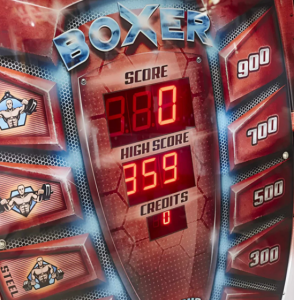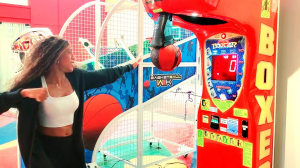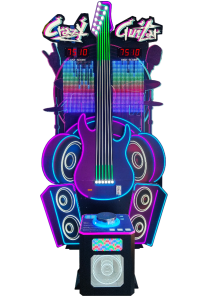Improving reflexes in arcade games will thus be achieved by practicing frequently, training hand-eye coordination, visual processing training, training finger agility, and rest. These increase the possibility of quicker responses with operational accuracy.
Table of Contents
ToggleFrequent Practice
The most basic way to improve reflexes for arcade games is to play them more often. High-frequency practice enables the brain to adapt more quickly to the operation modes and rhythms of a game, therefore shortening reaction time. In this way of practice, one is continuously reinforcing the reaction pathways not only with fingers but also with the brain.
The more practice one gets, the more reaction times can be shortened. A study among athletes has shown that after five weeks of high-intensity reaction training, the average reaction time of participants was reduced by 15% to 25%. Although these data mainly apply to sports activities, the same principle can be used for reaction training in arcade games. Usually, arcade games require coordination among the eyes, hands, and brain, and long-term and frequent operation will make these reaction pathways more effective.
However, the frequency of practice should be manageable within a short period. Ideally, the practice should be about 1 to 2 hours and must have suitable breaks in between practices to prevent over-fatigue of the brain from affecting practice quality. More importantly, together with frequent practice, attention has to be given to the types of arcade games. Some games require strong agility of the fingers, while others require quick judgments. Practice can comprehensively improve reaction abilities by switching between different game types.
Finger Agility Training
In arcade games, the flexibility and reaction speed of your fingers directly determines your performance in the game. Finger agility training is one of the core components of improving reflexes for arcade games. By specifically training the flexibility and speed of your fingers, you can greatly enhance your operational reactions in the game.
An effective method of finger agility training is “rapid button-pressing exercises.” Within a fixed time frame (e.g., 30 seconds), repeatedly pressing a specific button or combination of buttons can strengthen finger movement memory and reaction speed. This type of training can be done through simple mobile apps designed for reaction time testing. Doing 10 minutes of button-pressing exercises daily can significantly improve your finger operation speed and accuracy within a week.
Another method is increasing “finger strength training.” For arcade games requiring fast button presses, the strength of your fingers directly affects reaction efficiency. Squeezing a fitness ball or using a finger expander can strengthen the muscles in your fingers. Data shows that after increasing hand strength, pressing reaction times can improve by about 10% to 15%.
Engaging in everyday activities such as typing or playing the piano can also help improve finger agility. These activities not only increase finger flexibility but also enhance muscle memory, allowing you to complete complex commands faster in games.

Visual Processing Training
Many actions in arcade games require judgment based on visual feedback, so improving visual processing abilities is key to speeding up reactions. Most arcade games rely on players quickly identifying changes on the screen, such as moving objects or sudden obstacles. If your brain can process these visual cues faster, your reaction times will naturally improve.
One effective visual processing training method is “flash card training,” where rapidly changing visual content is presented in a short period, and the player must react immediately. Gradually shortening the flashcard display time can improve the brain’s speed in processing visual information. This type of training can enhance your ability to capture screen information, allowing you to notice upcoming changes in the game more quickly.
Playing sports like table tennis or badminton can improve your ability to track fast-moving objects with your eyes. This type of practice can help you lock onto targets more accurately in games, especially those requiring quick aiming or dodging.
That after six weeks of visual reaction training, participants improved their visual reaction speeds by about 12%. This improvement can be directly reflected in faster gameplay operations, such as spotting enemies quicker or avoiding obstacles more accurately.
Hand-Eye Coordination Training
Hand-eye coordination is another crucial factor for success in arcade games. Most arcade games require players to focus on the screen and control inputs simultaneously, so hand-eye coordination is especially important. If your hand movements and visual feedback are not well-coordinated, even fast reactions can result in operational errors.
Hand-eye coordination training can be achieved using specific training tools. A “reaction ball” is a device that can enhance hand-eye coordination. It would help if you pressed the corresponding button when it lights up randomly, which can greatly improve the synchronization between hand movements and visual feedback. By doing 10 to 15 minutes of hand-eye coordination training daily, you can see a noticeable improvement in reaction time within two weeks.
Another common training method is “throwing practice.” Simple throw-and-catch exercises effectively enhance hand-eye coordination. You can try throwing and catching at different angles and heights, gradually increasing the difficulty. This can help you make more flexible and accurate responses when handling complex arcade games.
The higher the complexity of the game, the more demanding it becomes for hand-eye coordination. Especially for arcade games requiring fast aiming and hitting targets, good hand-eye coordination can give you a significant advantage.
Focus and Mental Training
Quick reactions in arcade games not only rely on physical coordination and agility but also on concentration and mental state. Particularly in high-intensity arcade games, players must maintain a high level of focus to make the correct response in a short time.
Meditation training can improve the brain’s focus and ability to handle stress. Practicing meditation for 10 minutes daily can help you maintain a calm mindset during gameplay, reducing the delays caused by nervousness or anxiety. This type of mental training can also help you better handle frustration or failure in the game and remain composed.
Mental anticipation is also a part of improving reaction ability. After repeatedly playing the same game scenarios, your brain can quickly anticipate changes through conditioned reflexes. Some arcade games have enemy attack patterns that are predictable. After some training, your brain can automatically anticipate certain visual cues, allowing you to react in advance. Cultivating this mental anticipation can significantly reduce your reaction time.
People who maintain high concentration levels respond about 30% faster to sudden events than average. Therefore, developing focus is crucial for improving reflexes in arcade games.

Agility Training
While arcade games are primarily operated by hand, overall body agility can still significantly impact reaction time. Agility training enhances the brain’s response speed, indirectly improving hand operation speed.
Agility training, such as sprinting or jumping rope, can enhance the brain’s ability to handle sudden situations. Practicing agility exercises for 10 to 15 minutes daily can significantly improve your reaction time and smoothness of operations. Especially in arcade games requiring coordinated hand and foot movements, agile physical responses will help you complete complex tasks more quickly.
Core strength exercises, such as sit-ups or push-ups, can also help maintain physical stability, preventing fatigue from affecting operations during long game sessions. A stable body state helps you stay more focused in games and reduces mistakes.
Individuals who undergo agility training see improvements in reaction times of about 15% to 20%. This improvement is particularly noticeable in arcade games that require fast responses.
Rest and Recovery Strategies
Effective training must be combined with adequate rest to achieve the best results. The improvement of reflexes relies not only on training but also on the brain’s ability to rest and recover. After long sessions of arcade gaming, the brain and body can become fatigued, and continuing to play in this state is not only ineffective but may slow down reaction times.
Adequate sleep can significantly enhance the brain’s processing speed and concentration. For arcade game players, getting 7 to 8 hours of sleep per day ensures that the brain remains in an optimal state for quick reactions. Lack of sleep can lead to slower reaction times and increased chances of making judgment errors, which negatively impacts your gaming performance.
In addition to sleep, taking proper breaks during gameplay is also crucial. After playing for 45 minutes to an hour, it is recommended to take a 5 to 10-minute break to allow the brain to recover. During these breaks, stretching or doing simple breathing exercises can help the brain and body quickly return to peak performance.
By combining effective training with scientific rest strategies, you can maintain a high level of reflexes in arcade games and handle complex game scenarios more easily.




